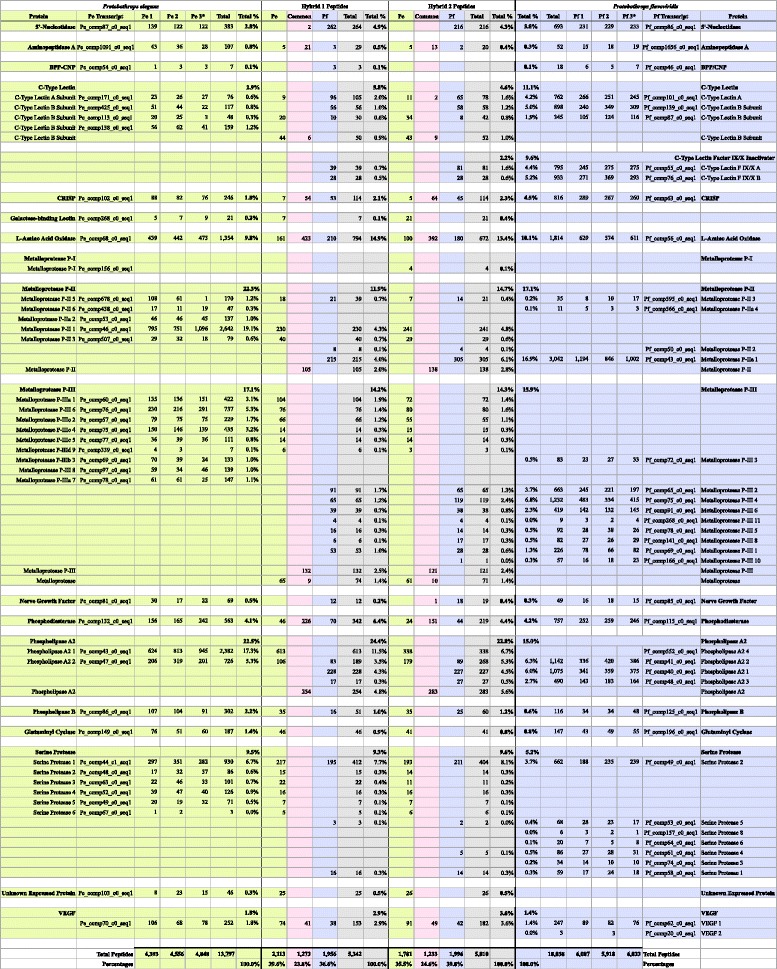Fig. 3.

Proteomic data demonstrate that the two hybrids are genuine. Peptides from all specimens were matched to transcripts from both parental species (*specimens Pe 3 and Pf 3). Homologous proteins are aligned on the same row. Proteins without homologs in the other transcriptome occupy their own rows. Percentages at the bottom of the hybrid columns indicate the percentage of all peptides in the hybrid proteome corresponding to transcripts in each of the parental species. For the hybrids, numbers of unique peptides corresponding to each of the parental transcripts are provided in color-coded columns (green = P. elegans; blue = P. flavoviridis). If a peptide could have come from one or more transcripts in both parental species, it was classified as “common” (pink), meaning that it was potentially common to both, or that its origin was indeterminate. Total percentages of peptides from each protein family are given in bold. Hybrid percentages for each pair of venom protein homologs are shown in gray columns. Peptides that corresponded to missing portions of incomplete transcripts could not be identified. Despite huge advances in mass spectrometric technology, shotgun sequencing is still less quantitative than transcriptomic approaches, so proteomic totals differ quantitatively from those presented for transcriptomes (Additional file 2: Table S1 and Additional file 3: Table S2) In the Phospholipase A2 section, 613 peptides from a noncatalytic, myotoxic PLA2 (transcript Pe_comp43) were detected in the venom of Hybrid 1 and 338 peptides were isolated in venom of Hybrid 2. It was also found in venoms of all three P. elegans specimens. Neither the hybrid venoms nor the three P. flavoviridis venoms contained peptides from the homologous PLA2 (transcript Pf_comp552). Likewise, peptides from two P. flavoviridis PLA2 transcripts (Pf_comp40 and 48), with no homologs in the P. elegans transcriptome, were found in the venoms of all three P. flavoviridis and those of both hybrids, but not in the three P. elegans venoms. In contrast, P. elegans transcript Pe_comp47 and P. flavoviridis transcript Pf_comp41 encode a basic, catalytic PLA2, homologous to PL-Y. Both hybrids had peptides corresponding to each of these transcripts while specimens of the two species had only their own Hybrid 1 had 254 common PLA2 peptides (pink) and Hybrid 2 had 283, comprising 4.8 and 5.6 % of the two hybrid proteomes, respectively. These peptides could have originated with transcripts in both parental venom proteomes and could not be assigned unambiguously to any single transcript. In Hybrid 1 venom, 24.4 % of all peptides detected were PLA2 peptides, while this class accounted for 22.8 % of the peptides identified in Hybrid 2 venom. Most other protein families tell a similar story. Venom composition of the putative hybrid venoms confirm that the specimens are legitimate hybrids
